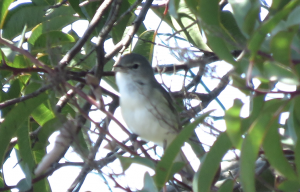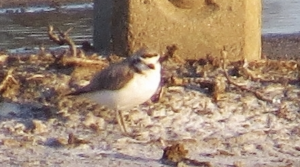Activists say a less damaging alternative could have been approved and claim the Commission has allowed illegal ‚Äúpiecemealing‚ÄĚ of a larger project.
PLAYA DEL REY, CALIFORNIA, UNITED STATES, August 20, 2024 /EINPresswire.com/ -- Defend Ballona Wetlands Files Lawsuit Challenging the California Coastal Commission for Approving a Project Staff Admits Would Destroy Wetlands and Sensitive Habitat Relied on by Endangered Birds.
Defend Ballona Wetlands, a community coalition supporting a gentle restoration at the Ballona Wetlands State Ecological Reserve near Playa del Rey, has filed a lawsuit in Los Angeles County Superior Court* challenging the California Coastal Commission’s July 12th approval of a SoCalGas project that the Commission’s staff report admits will destroy wetlands and sensitive habitat relied on by endangered birds.
*Case no. 24STCP02620 ‚Äď Superior Court State of California, County of Los Angeles
Defend Ballona Wetlands ‚ÄĘ 322 Culver Blvd., #317, Playa del Rey, CA 90293
More than 95% of California’s historical coastal wetlands have been destroyed by fossil fuel facilities, big agricultural operations and overdevelopment. The California Coastal Act does not allow for destruction of these very fragile and now extremely rare habitats referred to as ESHA (Environmentally Sensitive Habitat Area.) The California Environmental Quality Act, which also must be followed by the Coastal Commission, requires denial of such a project if there is an environmentally less damaging alternative, which Defend Ballona Wetlands and other members of the public asked the Commission to consider. They did not.
Environmental public interest lawyer Jamie T. Hall of Channel Law Group filed the lawsuit on behalf of Defend Ballona Wetlands. Hall‚Äôs firm also issued a Cease & Desist letter earlier this year, notifying the California Department of Fish & Wildlife (CDFW) that they were in violation of the Court injunction in effect invalidating an environmental report prepared by the agency. His letter warned that CDFW and others should stop development activities at the Ballona Wetlands Ecological Reserve ‚Äď a rare coastal ecosystem that has been fought over for decades, and also on adjacent property owned by SoCalGas. These properties were included within the project site of a habitat alteration and gas infrastructure project area where California Superior Court Judge James C. Chalfant issued a strong and clear injunction order last summer. CDFW and SoCalGas are named as Real Parties in Interest in the petition filed Friday, August 16.
Susanne Cumming, one of the community advocates in Defend Ballona Wetlands, spoke at the hearing and pleaded with the Commission to approve a less damaging alternative. ‚ÄúWe don‚Äôt object to capping these old wells, as we all want safety. We do, however, object to wetlands and sensitive habitat relied on by four endangered bird species being destroyed, especially since the science on re-creating wetlands habitat is spotty at best. Several of us mentioned in the proceedings that the removal of the cement platforms or cellars ‚Äď which would cause most of the damage ‚Äď is unnecessary and should be considered,‚ÄĚ explained Cumming.
Other less damaging alternatives were also suggested, but none were even discussed by the Commissioners, who unanimously approved SoCalGas‚Äô project. Wendy Sue Rosen, President of Protect Ballona Wetlands, commented, recently: ‚ÄúOne of the recommended alternatives favored by community groups is to study the impacts of stopping transportation and injection of fossil gas into the ground beneath this fragile wetlands habitat. Compare that to the plans SoCalGas has to expand their operation by slant drilling from the bluffs into the oil field ‚Äď bringing more drilling wells and health impacts closer to the neighborhoods. Instead of allowing expansion of the fossil gas infrastructure, the State needs to curb this gas operation, as several cities, and the County of LA have requested. That‚Äôs the sort of review the law requires instead of piecemealing individual wells,‚ÄĚ stated Rosen.
SoCalGas transports fracked fossil gas across the country via pipelines from Oklahoma, Texas and Colorado and then injects that gas (using more than 200 chemicals, according to the LA County Health Dept.) a mile beneath the soil‚Äôs surface under the Ballona Wetlands and surrounding communities. Despite regular calls by scientists and governments to stop using fossil gas (mostly methane) due to an increased awareness of its impact on climate change, SoCalGas and its parent company, Sempra, insist on expanding its infrastructure in Playa del Rey at the Ballona Wetlands. Their plan that is part of the ‚ÄėBallona Wetlands Restoration Project‚ÄĚ involves removing or moving and replacing 18 wells and at least one pipeline that traverses the reserve. The CA Council on Science and Technology has concluded in a report to the state legislature that the Playa del Rey storage facility is the most dangerous in the state, due to its proximity to residential neighborhoods, schools and places of worship. The Cities of Los Angeles, Culver City and Santa Monica, as well as the LA County Board of Supervisors, have called on Sacramento to take measures to close the fossil gas and oil operation that has impacted the community with health issues and several dangerous blow-out incidents.
Marcia Hanscom, a community organizer who has worked to protect the Ballona Wetlands for nearly 30 years, and helped organize the Defend Ballona Wetlands coalition, emphasized the ‚Äúpiecemealing‚ÄĚ that the lawsuit calls out. One of the coalition‚Äôs largest groups, In Defense of Animals, has sent action alerts resulting in more than four thousand letters being sent to state officials objecting to these deceptive mini-projects.
‚ÄúIt‚Äôs death by a thousand cuts that the state of California is permit-ting at this important, fragile ecosystem that officials thought was valuable enough to pay $139 million for in 2003. We‚Äôve had enough of standing by and watching two agencies charged with protecting these delicate lands giving the green light to go ahead with a project that ‚Äď when looked at all together by Superior Court Judge James Chalfant ‚Äď was deemed to have an unlawful environmental impact report,‚Äú stated Hanscom.
‚ÄúThe State is clearly having trouble extricating itself from the fossil fuel industry. That approach is not only unhelpful in terms of reaching our climate goals, but it is illegal when endangered species and wetlands are at risk,‚ÄĚ added Environmental Scientist Robert J. van de Hoek, who offered a less damaging alternative of converting the old cement cellars to bat habitat instead of digging them out and destroying the wetlands.
‚ÄúBats love to eat Mosquitoes and Midges ‚Äď so more Bat habitat can keep the ecosystem in balance,‚ÄĚ van de Hoek explained.
Photos show some of the endangered bird species that would be harmed; photo credits: Jonathan Coffin.
Least Bell’s Vireo - Vireo bellii pusillus
Western Snowy Plover - Charadrius nivosus
Belding’s Savannah Sparrow - Passerculus sandwichensis baldingi
Marcia Hanscom
Defend Ballona Wetlands
+1 310-877-2634
email us here
Visit us on social media:
Facebook






